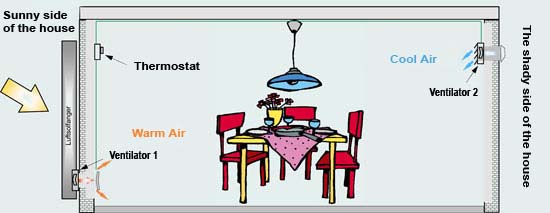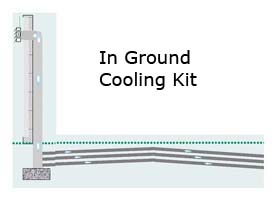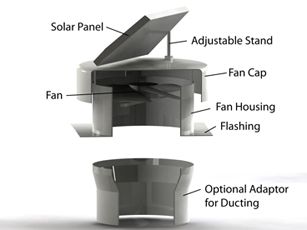If your house is hot in summer and cold in winter, this article is a must-read.
Over the last 10 years, Australian local governments have implemented systems like BASIX (in NSW) to encourage homeowners to design and build new homes that are energy efficient as well as thermally comfortable to live in. But what about new homes that seem to slip through the cracks on compliance, or the vast majority of Australian homes that are not new? How can these homes be altered to enhance their energy efficiency, thermal comfort and overall functionality? Well, its actually not that difficult, you just need to follow some important tips.
1. Install insulation
If you can only afford to spend a minimal amount on improving the energy efficiency of your home, spend it firstly on insulation. A house loses heat initially through the ceiling, then the walls and lastly the floor. So always insulate your ceilings first for the most noticeable increase in internal warmth and energy savings.
2. Reduce open plan spaces where possible
Reduce open plan spaces to limit warm or cool air escaping into areas that are not frequently used or outside. This includes:
- Fixing drafty doors and windows with new seals
- Disconnecting living spaces from sleeping spaces (so you are only heating what you need to)
3. Ventilation solutions for hot, damp and cold spaces
If you have rooms that are either oriented to the west or south, or always seem to be hot, musty, damp or cold, there are many things you can do to fix these problems.
- Improve natural flow-through ventilation to remove hot air. Work out where the summer breezes on your site are coming from. Are there windows on this side of your house? Positioning window openings correctly will help cool your house in summer, but be careful not to create an entry for the harsh western sun that will overheat the space.
- Mechanically ventilate mouldy and stuffy spaces to create healthy and fresh rooms
If you can't naturally remove hot air from your new home or renovated home, try mechanical ventilation. There is a product called a Solar Air Module (SAM) that is a natural, solar powered, air-moving system. It ventilates thermally uncomfortable spaces, saving on heating and cooling bills, while ensuring a healthy indoor climate. The SAM costs nothing to run and if your home has been planned correctly you can use the system in place of a standard air-conditioner for the entire house.

The Solar Air Module is a constant air-moving unit. It can bring warm or cool air into your home. The system creates a slight positive pressure and prevents the build-up of dust and dust mites, preventing rooms from becoming stuffy, stale, mouldy or damp. As a result this reduces associated health issues such as allergies because the system is always running. The SAM can also be used to ventilate subfloor areas, and is commonly used for the removal of stale air in holiday homes, preventing mustiness.
 The system on the right is the In Ground Cooling Kit, keeping the internal spaces of your home closer to subterranean temperatures, not dissimilar to Geothermal systems as seen on Grand Designs, but far less costly.
The system on the right is the In Ground Cooling Kit, keeping the internal spaces of your home closer to subterranean temperatures, not dissimilar to Geothermal systems as seen on Grand Designs, but far less costly.
Roof space ventilation for hot air removal
Remember when all homes had eave or gable end roof ventilation? This method works just as well today in removing hot air from internal ceiling spaces. Energy efficient, or green, homes work best when the roof space is large and well ventilated and roof sheeting is separated from ceiling joists. This construction method reduces summer cooling bills and also removes moisture in the air derived from wet-area fans. For hot air removal, mechanical ventilators work better than vents alone.
A unit such as the completely solar powered SolarWhiz, will help remove hot, moist air from the ceiling environment using free power from the sun. A correctly installed Solar Whiz will keep the roof space temperature a few degrees above ambient, whilst passive systems such as vents only start operating when the air in the roof space expands with higher temperatures. This is when the heat starts to make its way through the ceiling into your living areas – even when you have good insulation!
Picking the right colours for your home
Light colours reflect sunlight and heat, so avoid using dark colours for cladding and roof sheeting.
Shading techniques - introducing plants
Planting a large, bushy deciduous tree on the western side of your house will help protect your home from the brutal afternoon summer sun. And in winter, the sun will be able to stream into your home.
North face your living areas
Study the way the sun works in your home. Where are the warm and sunny winter spots that you enjoy? Where is it cool and well shaded in the summer? These areas may be in the children’s bedrooms or in the laundry. This is where your living space needs to be.
Introduce window shading like window shutters
It is important to stop the heat from the outside of your home. If you have a window that faces north the optimum depth of this shading device is 900mm out from your house. The shading device maybe an awning, roof overhang or pergola.
Keep your house dry with natural moisture absorber
Humidity levels are very important for our thermal comfort as well as our health. It is widely agreed that most people are comfortable at a humidity level between 40% and 60% relative humidity. It is therefore important to keep humidity levels down, which can be a challenge, especially in poorly designed new homes. The SolarVenti system addresses this issue very effectively by pushing moist air out of the building and substituting it with fresh dry air. Controlling the humidity also brings other benefits like increased efficiency of heating systems (as no energy is wasted on evaporating moisture accumulated in the house) and feeling comfortable at a lower temperature.
There is nothing like having a cosy house in the winter and a cool home during the summer. The nine tips above make a good start on greatly improving the thermal comfort of your home, making your house a pleasure to live in, as well as significantly reducing your energy bills.



